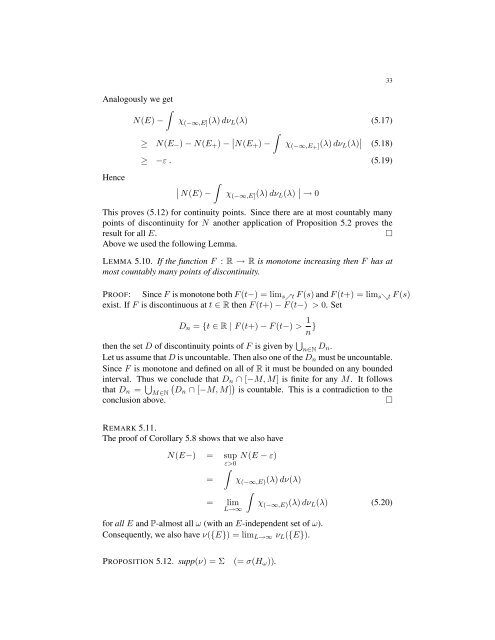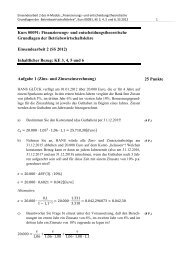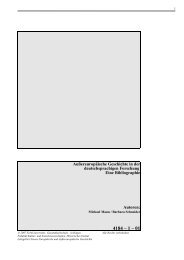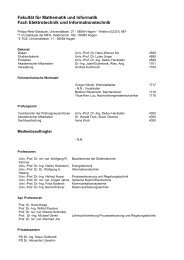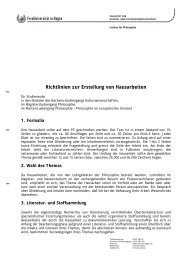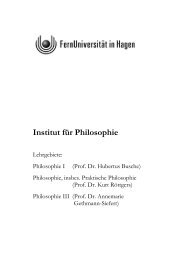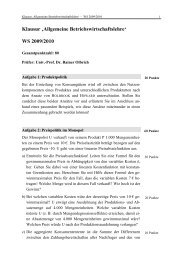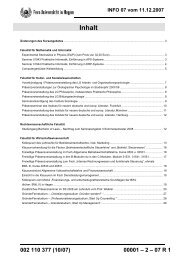An Invitation to Random Schr¨odinger operators - FernUniversität in ...
An Invitation to Random Schr¨odinger operators - FernUniversität in ...
An Invitation to Random Schr¨odinger operators - FernUniversität in ...
Create successful ePaper yourself
Turn your PDF publications into a flip-book with our unique Google optimized e-Paper software.
<strong>An</strong>alogously we get<br />
∫<br />
N(E) − χ (−∞,E] (λ) dν L (λ) (5.17)<br />
≥ N(E − ) − N(E + ) − ∣ ∫<br />
∣N(E + ) − χ (−∞,E+ ](λ) dν L (λ) ∣ (5.18)<br />
≥ −ε . (5.19)<br />
33<br />
Hence<br />
∫<br />
∣ N(E) −<br />
χ (−∞,E] (λ) dν L (λ) ∣ ∣ → 0<br />
This proves (5.12) for cont<strong>in</strong>uity po<strong>in</strong>ts. S<strong>in</strong>ce there are at most countably many<br />
po<strong>in</strong>ts of discont<strong>in</strong>uity for N another application of Proposition 5.2 proves the<br />
result for all E.<br />
□<br />
Above we used the follow<strong>in</strong>g Lemma.<br />
LEMMA 5.10. If the function F : R → R is mono<strong>to</strong>ne <strong>in</strong>creas<strong>in</strong>g then F has at<br />
most countably many po<strong>in</strong>ts of discont<strong>in</strong>uity.<br />
PROOF: S<strong>in</strong>ce F is mono<strong>to</strong>ne both F (t−) = lim s↗t F (s) and F (t+) = lim s↘t F (s)<br />
exist. If F is discont<strong>in</strong>uous at t ∈ R then F (t+) − F (t−) > 0. Set<br />
D n = {t ∈ R | F (t+) − F (t−) > 1 n }<br />
then the set D of discont<strong>in</strong>uity po<strong>in</strong>ts of F is given by ⋃ n∈N D n.<br />
Let us assume that D is uncountable. Then also one of the D n must be uncountable.<br />
S<strong>in</strong>ce F is mono<strong>to</strong>ne and def<strong>in</strong>ed on all of R it must be bounded on any bounded<br />
<strong>in</strong>terval. Thus we conclude that D n ∩ [−M, M] is f<strong>in</strong>ite for any M. It follows<br />
that D n = ⋃ (<br />
M∈N Dn ∩ [−M, M] ) is countable. This is a contradiction <strong>to</strong> the<br />
conclusion above.<br />
□<br />
REMARK 5.11.<br />
The proof of Corollary 5.8 shows that we also have<br />
N(E−) = sup N(E − ε)<br />
=<br />
ε>0<br />
∫<br />
χ (−∞,E) (λ) dν(λ)<br />
∫<br />
= lim<br />
L→∞<br />
χ (−∞,E) (λ) dν L (λ) (5.20)<br />
for all E and P-almost all ω (with an E-<strong>in</strong>dependent set of ω).<br />
Consequently, we also have ν({E}) = lim L→∞ ν L ({E}).<br />
PROPOSITION 5.12. supp(ν) = Σ (= σ(H ω )).


